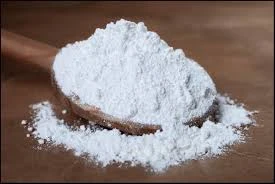
Understanding the Role of Emulsifier INS 471 in Food Products and Applications
Understanding Emulsifier INS 471 A Comprehensive Guide
Emulsifiers are substances that help to stabilize mixtures of water and oil. One commonly used emulsifier in the food industry is INS 471, also known as mono- and diglycerides of fatty acids. This article aims to provide a thorough understanding of INS 471, its sources, functions, safety, and applications in food products.
What is INS 471?
INS 471 is a food additive derived from the glycerol esters of fatty acids. It is primarily obtained through the glycerolysis of fats and oils, which can be sourced from both animal and vegetable origins. This emulsifier consists of two main components mono-glycerides, which contain one fatty acid chain, and di-glycerides, which contain two chains. This chemical structure allows INS 471 to effectively reduce surface tension, making it easier to mix and stabilize water and oil combinations.
Functions of INS 471
The primary function of INS 471 as an emulsifier is to improve the texture and consistency of food products. It aids in preventing the separation of ingredients, ensuring a uniform distribution of fat within the mix. This emulsifier also enhances mouthfeel, providing a creamy or smooth texture that consumers often associate with high-quality products. Additionally, INS 471 can improve the shelf life of food items by minimizing the oxidation of fats and oils, which helps maintain flavor and quality over time.
Applications in Food Products
INS 471 is widely used in various food applications. Some common uses include
1. Baked Goods In bread, cakes, and pastries, INS 471 helps maintain moisture and improve crumb structure, resulting in a softer and fresher product.
emulsifier ins 471

2. Dairy Products It is often added to ice cream and margarine to improve texture and stabilize emulsions, preventing the formation of ice crystals.
3. Sauces and Spreads INS 471 aids in stabilizing salad dressings, mayonnaises, and other creamy sauces, enhancing viscosity and preventing separation.
4. Confectionery In chocolates and candies, it helps to achieve a smooth texture and improve mouthfeel, ensuring a consistent product.
5. Processed Foods Many processed foods, including snacks and ready-to-eat meals, utilize INS 471 to maintain product quality and texture.
Safety and Regulations
INS 471 is considered safe for consumption and is approved for use in many countries around the world, including those governed by the Food and Drug Administration (FDA) and the European Food Safety Authority (EFSA). It is classified as Generally Recognized As Safe (GRAS), which means that it is considered safe when used in accordance with good manufacturing practices.
However, as with all food additives, the consumption of INS 471 should be moderated. While it poses minimal health risks to the general population, individuals with specific dietary restrictions or allergies should check labels carefully, as some sources of INS 471 may derive from allergens like milk or soy.
Conclusion
INS 471, or mono- and diglycerides of fatty acids, plays a crucial role in the food industry as an effective emulsifier. Its ability to stabilize oil and water mixtures enhances the quality and texture of a wide range of food products, from baked goods to dairy items. While it is considered safe for consumption, it is always wise for consumers to be aware of the ingredients in their food, especially those with allergies or sensitivities. As the food industry continues to evolve, the role of emulsifiers like INS 471 remains indispensable, ensuring that products meet consumer expectations for taste, texture, and shelf stability.
-
Pure Sodium Dichloroisocyanurate Dihydrate | Powerful DisinfectantNewsAug.29,2025
-
Industrial Chemicals: Quality & Purity for Every IndustryNewsAug.28,2025
-
Nitrile Rubber Honoring Strict Production StandardsNewsAug.22,2025
-
Aspartame Ingredients Honoring Food Safety ValuesNewsAug.22,2025
-
Fertilizer for Balanced Plant NutritionNewsAug.22,2025
-
Cyanide Gold Processing with High Purity AdditivesNewsAug.22,2025
-
Formic Acid in Textile Dyeing ApplicationsNewsAug.22,2025
Hebei Tenger Chemical Technology Co., Ltd. focuses on the chemical industry and is committed to the export service of chemical raw materials.
-

view more DiethanolisopropanolamineIn the ever-growing field of chemical solutions, diethanolisopropanolamine (DEIPA) stands out as a versatile and important compound. Due to its unique chemical structure and properties, DEIPA is of interest to various industries including construction, personal care, and agriculture. -

view more TriisopropanolamineTriisopropanolamine (TIPA) alkanol amine substance, is a kind of alcohol amine compound with amino and alcohol hydroxyl, and because of its molecules contains both amino and hydroxyl. -

view more Tetramethyl Thiuram DisulfideTetramethyl thiuram disulfide, also known as TMTD, is a white to light-yellow powder with a distinct sulfur-like odor. It is soluble in organic solvents such as benzene, acetone, and ethyl acetate, making it highly versatile for use in different formulations. TMTD is known for its excellent vulcanization acceleration properties, which makes it a key ingredient in the production of rubber products. Additionally, it acts as an effective fungicide and bactericide, making it valuable in agricultural applications. Its high purity and stability ensure consistent performance, making it a preferred choice for manufacturers across various industries.





